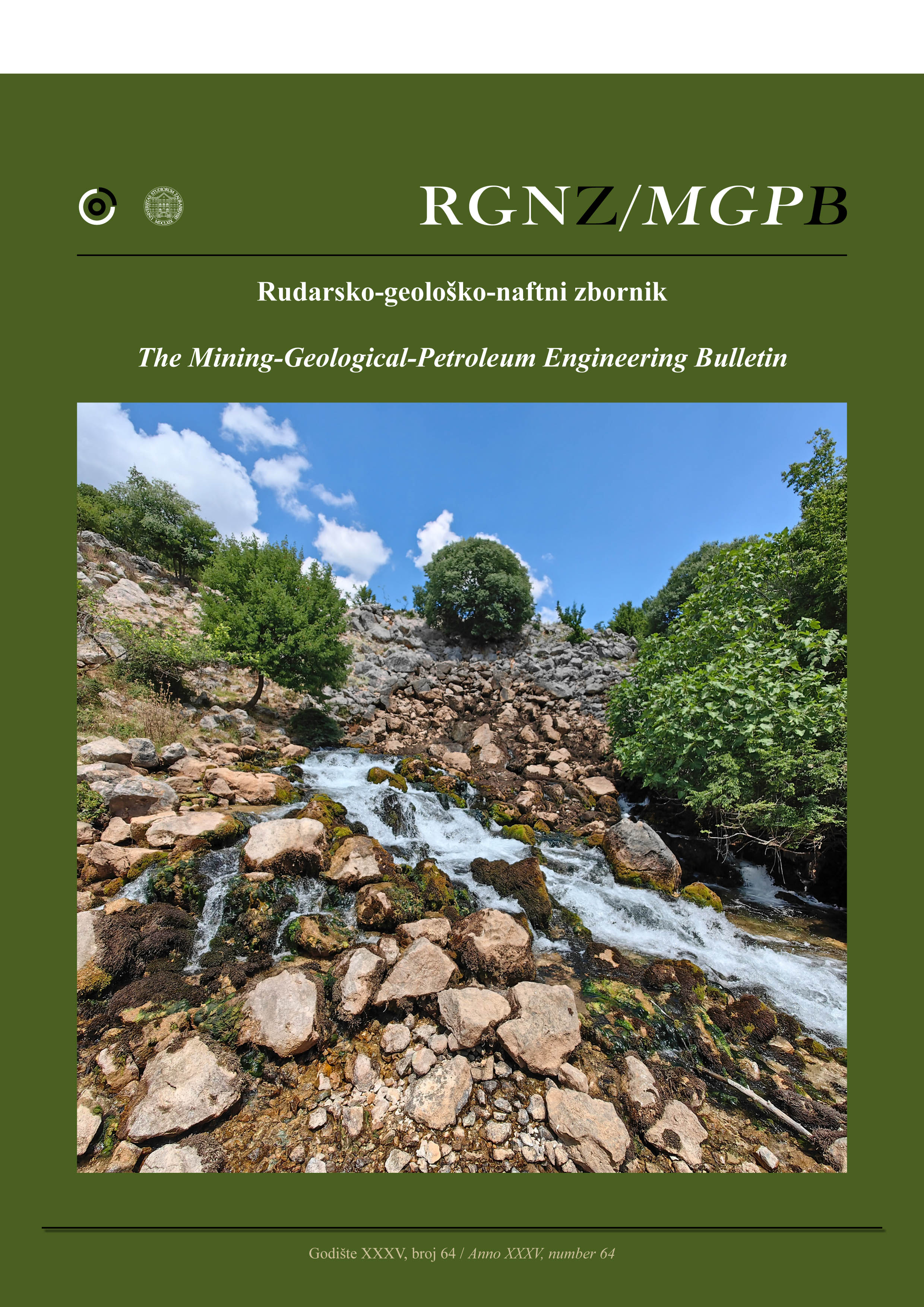Remediation of coal ash and slag disposal site: Comparison of radiological risk assessments
DOI:
https://doi.org/10.17794/rgn.2023.3.8Keywords:
radiological risk assessment, NORM, coal fired power plant, remediation, environmental monitoringAbstract
Residuals from coal combustion are known as a potential source of radiation exposure, especially in cases where the coal used in the combustion is characterized by increased radioactivity, resulting in coal ash and slag with potentially high activity concentration of radionuclides. This paper presents the results of the radiological risk assessments based on the ERICA Tool approach, used to estimate dose rates to terrestrial biota in the proximity of a coal fired thermal power plant in Croatia. The study consists of three radiological risk assessments using environmental data on activity concentration (Bqkg-1) from samples collected prior to the remediation of the disposal site and samples after the remediation implementation was completed. The resulting total dose rate to biota derived using data prior to the remediation ranged from 3.28 μGyh-1 to 147.68 μGyh-1. Assessment results of total dose rate based on the data from the studied area after remediation ranged from 0.23 μGyh-1 to 18.06 μGyh-1. The results showed that after the remediation only the total dose rate for lichens and bryophytes slightly exceeded ERICA Tool conservative screening value of 10 μGyh-1, which implies that environmental risks in relation to exposure to the disposal site can be considered negligible. The study results confirm the applicability of the ERICA Tool for the assessment of potential radiological impact and the effective remediation implementation at the coal and ash slag disposal site.
Downloads
Published
How to Cite
Issue
Section
License
Copyright (c) 2023 Ana Getaldic, Marija Surić Mihić, Želimir Veinović, Božena Skoko, Branko Petrinec

This work is licensed under a Creative Commons Attribution 4.0 International License.
Creative Commons-BY
Authors who publish with this journal agree to the following terms:
In agreeing this form, you certify that:
- You read the ethical codex of the RGN zbornik available at journal web.
- You submitted work is your original work, and has not previously been published and does not include any form of plagiarism.
- You own copyright in the submitted work, and are therefore permitted to assign the licence to publish to RGN zbornik.
- Your submitted work contains no violation of any existing copyright or other third party right or any material of an obscene, libellous or otherwise unlawful nature.
- You have obtained permission for and acknowledged the source of any illustrations, diagrams or other material included in the work of which you are not the copyright owner.
- You have taken due care to ensure the accuracy of the work, and that, to the best of your knowledge, there are no false statements made within it.
- All co-authors of this submitted work are aware of, and in agreement with, the terms of this licence and that the submitted manuscript has been approved by these authors.
Publication licence
You retain copyright in your submitted work, according to journal license policy (CC-BY). By signing this form you agree that RGN zbornik may publish it under the publication licence. In summary the licence allows the following:
Anyone is free:
- To copy, distribute, display, and perform the work.
- To make derivative works.
Under the following conditions:
- The original author must always be given credit.
- The work may not be used for commercial purposes.
- If the work is altered, transformed, or built upon, the resulting work may only be distributed under a licence identical to this one.
Exceptions to the licence
In addition to publishing the work printed under the above licence, RGN zbornik will also enable the work to be visible online.
The journal editorial can change the licence rules anytime but it cannot retroactively restrict author(s) rights.


